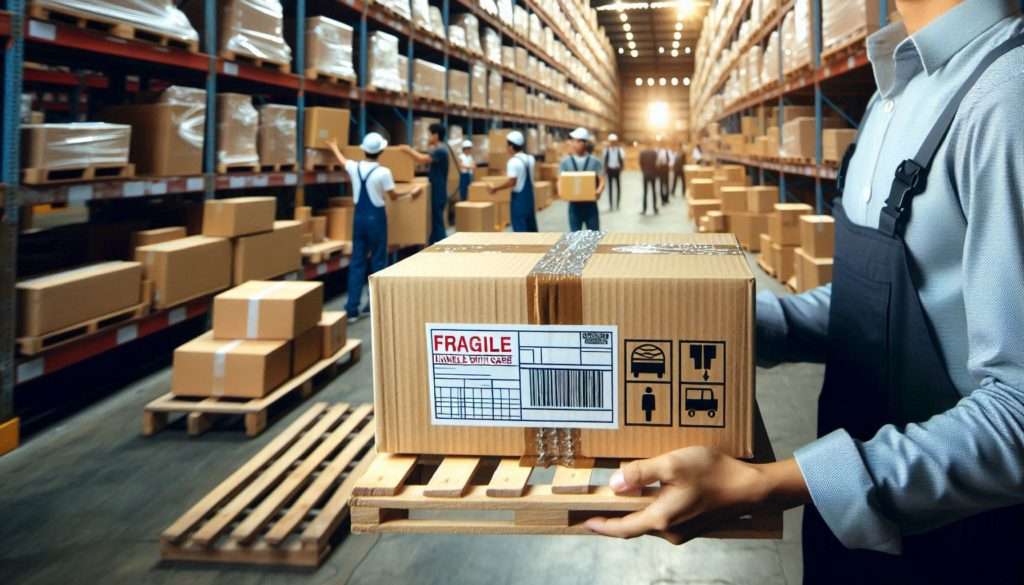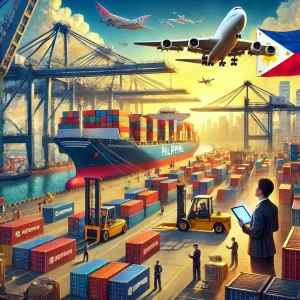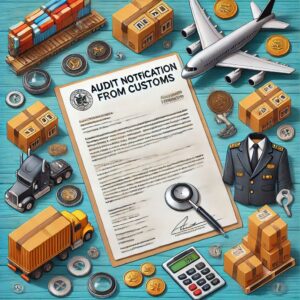In today’s globalized world, sending packages internationally is a common practice for both personal and business needs. If you plan to send packages to the Philippines, many convenient and reliable options exist. This guide explores the most trusted methods for shipping to the Philippines while outlining their advantages and disadvantages.
Sending packages internationally can be exciting yet challenging, particularly when shipping items to the beautiful and diverse Philippines. Whether you’re sending heartfelt gifts, business products, or community donations, understanding shipping procedures is crucial for smooth delivery. This guide will thoroughly explain essential tips to ensure your packages arrive safely and on time. Shipping to the Philippines offers various options, and I’ll detail some of the most popular and practical methods available.
Sending Packages via Courier
International courier services, and dependable shipping solutions for sending packages to the Philippines. These services commonly guarantee swift delivery times and online tracking features, ensuring the safe and timely arrival of your package. Nonetheless, they may incur relatively higher costs, particularly for larger or heavier packages.
Advantages:
– Swift delivery times
– Online tracking
– Reliable service
Disadvantages:
– Higher expenses compared to alternative options
– Additional fees for customs clearance
Sending Packages via National Postal Services
National postal services, such as USPS in the United States and Royal Mail in the UK, provide international shipping to the Philippines. Although they may not deliver packages as quickly as courier services, they often offer more affordable rates, making them a popular choice. However, delivery times can vary, and tracking features may be limited, which could affect convenience for some senders.
Advantages:
- Cost-effective shipping options suitable for budget-conscious senders
- Broad delivery network covering most destinations
- Easy-to-access drop-off points for added convenience
Disadvantages:
- Slower delivery speeds compared to express courier services
- Fewer tracking options, making shipment monitoring more challenging
Subscribe to the Ex-works24/7 newsletter
Sending Packages via Freight Forwarder
Freight forwarders specialize in shipping large or bulky items to international destinations, including the Philippines. They can help you navigate the complexities of international shipping, including customs clearance and documentation requirements. While freight forwarders may offer competitive rates for larger shipments, they may not be the most cost-effective option for smaller packages.
Pros:
- Expertise in international shipping
- Competitive rates for large shipments
- Assistance with customs clearance
Cons:
- May be more expensive for smaller packages
- Longer delivery times for sea freight
Through Online Marketplace and Retailers
If you’re purchasing items online from retailers or marketplaces like Amazon, eBay, or Alibaba, many of them offer international shipping to the Philippines. This can be a convenient option if you’re already making purchases online and want to send them directly to a recipient in the Philippines. However, delivery times and shipping costs can vary depending on the seller and shipping method chosen.
Pros:
- Convenient option for online shoppers
- Wide selection of products
- May offer free or discounted shipping promotions
Cons:
- Shipping costs can vary
- Delivery times may be longer for international shipments
Door-to-Door Balikbayan Box Services
For Filipinos living abroad who want to send packages to their loved ones in the Philippines, door-to-door balikbayan box services are a popular choice. These services allow you to pack items into a balikbayan box, which is then shipped directly to the recipient’s doorstep in the Philippines. While delivery times can be longer compared to courier services, balikbayan box services offer a cost-effective way to send larger quantities of items.
Pros:
- Cost-effective for sending large quantities of items
- Door-to-door delivery
- Familiar and trusted service for Filipinos abroad
Cons:
- Longer delivery times
- Limited to certain regions or countries for pickup
Things to consider in shipping
Before shipping to the Philippines, consider factors like compliance with regulations in both countries, as they impact shipping costs. Ensure your goods comply with legal requirements, especially for restricted items like dangerous goods or liquids. You may need an import permit for these items, which you’ll need to prepare. Accurate documentation, such as customs forms, declared value, and harmonized codes, is essential for smooth clearance. Tools like Ex-Works can generate required documents, saving time and effort. Also, understanding taxes and duties is crucial to estimating costs. The Philippines has a PHP 10,000 tax threshold and applies a 12% VAT on certain items.
In conclusion, consider factors like shipping costs, compliance with regulations, and import documentation for smoother transactions. Ensure your goods meet both your country’s shipping restrictions. Especially for dangerous items or liquids, to avoid issues. Sometimes, an import permit may be required for these shipments. Accurate documentation, declared value and harmonized codes are essential to streamline the process. Partners like Ex-Works Cargo simplify document preparation. Additionally, understand duties, taxes, and exemptions. For items above PHP 10,000, a 12% VAT applies, with duties calculated based on completed customs paperwork.
Frequently
Asked Questions
Several courier services offer reliable and affordable options for sending packages to the Philippines. Some of the best ones include:
- EX-WORKS CARGO: Known for its fast international delivery and tracking services. Ideal for urgent shipments.
- UPS: Offers a wide range of shipping options, including express services, with good tracking and customer service.
- FedEx: Provides international shipping with delivery guarantees, along with good tracking capabilities.
- LBC: A local Filipino courier with widespread availability in the Philippines. Known for reasonable pricing and domestic delivery options.
- Philippine Postal Service (PhilPost): A budget-friendly option for sending packages, though delivery times can be longer.
These services vary in speed, cost, and reliability, so it's important to choose one based on your delivery time frame and budget.
Shipping costs to the Philippines depend on several factors, including the size and weight of the package, the courier service, and the delivery speed (express, standard, etc.). On average:
- Small packages (1–2 kg): Can cost anywhere from $20–$50 for standard shipping.
- Larger packages (5–10 kg): Costs range from $50–$150 depending on the courier and service type.
- Express or expedited services: These are typically more expensive, often starting around $70 and going higher depending on the weight and destination.
To get an accurate quote, it's recommended to check the specific courier's website and use their online shipping calculator. Some couriers also offer flat rates for certain package sizes.
Yes, there are several items prohibited or restricted from being sent to the Philippines. These include, but are not limited to:
- Flammable materials (e.g., gasoline, aerosols)
- Weapons and ammunition
- Narcotics and illegal drugs
- Pornographic materials
- Items that could pose a risk to public safety or health (e.g., toxic substances, biological materials)
- Cultural heritage items (e.g., antiques, artifacts)
It's always a good idea to check with the courier for a full list of prohibited items and ensure that your package complies with regulations to avoid delays or confiscation.
Delivery times vary based on the courier service, shipping method, and origin of the package. Here's a general idea:
- Express services: Typically 3–5 business days for delivery.
- Standard international shipping: Usually takes 7–14 business days.
- Economy or budget shipping: This can take anywhere from 2–4 weeks.
Delays can occur due to customs processing or holiday periods, so it's always best to allow a little extra time if you need the package delivered by a specific date.
Yes, customs duties and taxes may apply when sending packages to the Philippines, depending on the value and nature of the contents. The Bureau of Customs in the Philippines imposes duties on certain goods, and the recipient may need to pay:
- Customs duties: Based on the declared value and classification of the item.
- Value-added tax (VAT): Generally, items valued over PHP 10,000 are subject to VAT.
- Other fees: Additional processing or handling fees might apply, especially if the package is held at customs for inspection.
To avoid surprises, ensure that the recipient is aware of any potential charges, and be sure to accurately declare the value of the contents on the shipping label.




